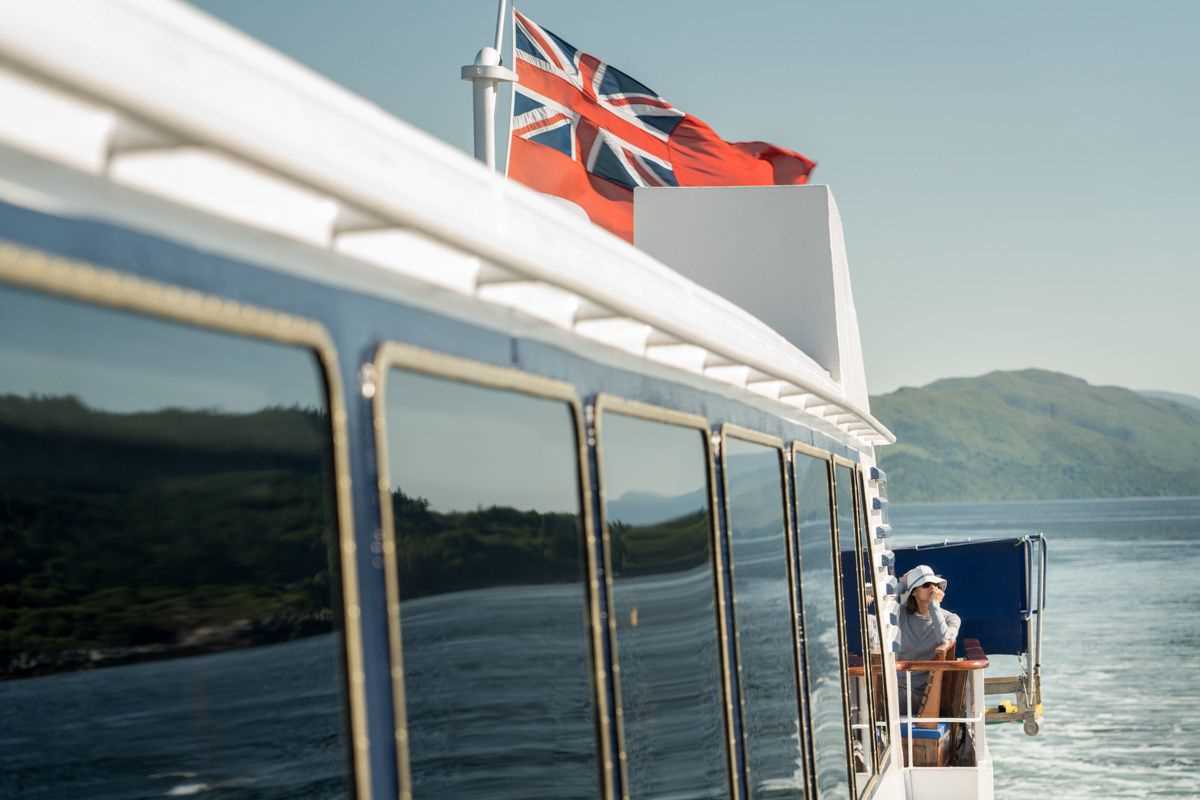Scotland is often thought
of as full of damp mists and blowing clouds, but today, the sleepy village of
Corpach woke to a morning sparkling with gentle sunshine and clear, blue skies.
The waters of the Caledonian Canal and adjacent Loch Linnhe were glassy and calm,
and Britain’s highest mountain, the mighty Ben Nevis, presided over the view.
Out we sailed through
the last sea lock, past the historic pepperpot lighthouse into salt water. The
town of Fort William, founded in 1690 as a government garrison to keep an eye
on unruly Highland clans during the reign of King William of Orange and Queen
Mary, slipped away behind us as we continued southwest toward Oban.
We passed by salmon
and mussel farms, and dolphins swam beside us for a brief while. Photographer
Eric Kruszewski gave a presentation on the marvels of smartphone photography. Soon
Lord of the Glens approached Oban Bay, guarded on one side by the
ancient ruins of Dunollie Castle, and sheltered by the island of Kerrera on the
other. Today, the bay thronged cheerfully with ferries, yachts, and fishing
boats, but back in the year 1263 AD, a great Viking fleet of longships led by
King Haakon IV of Norway mustered here, preparing to do battle with the king of
Scotland for possession of the Hebrides.
There was much to see
and do in Oban. People have lived here for at least 8,000 years, since
Mesolithic times, as evidenced by tools and other artifacts found in caves. The
town has produced whiskey since 1794, and a tour of the fascinating process of
malting the barley, distilling the spirit, and maturing the casks concluded
with a tasting of delicious 14-year-old malt.
The skyline of the
town is dominated by a peculiar circular stone structure reminiscent of the
Colosseum. McCaig’s Tower was commissioned by a wealthy local businessman as a
monument to his family, but the structure was unfinished by the time of his
death in 1902. A brisk uphill walk to the tower was rewarded with magnificent
views across the bay to the islands of the Hebrides and beyond.
Known as “the Seafood
Capital of the North,” Oban is celebrated for its marine harvest and, while
much of it is exported to the continent, the town is full of restaurants, cafés,
and shops serving a great variety of fresh fish, crab, mussels, scallops,
oysters, and lobsters.









